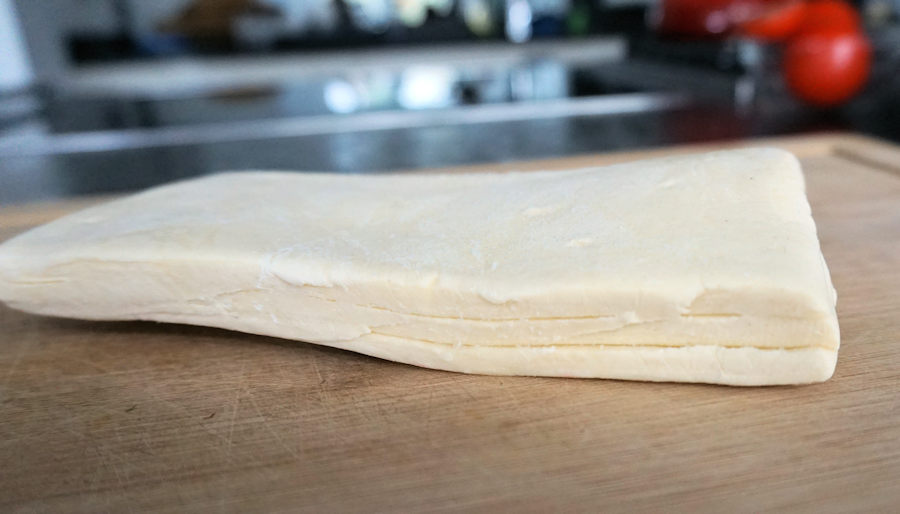It is not impossible to make puff pastry at home. In fact it’s quite a straightforward affair at least for rough puff or flaky pastry. I may yet change my mind about homemade ketchup.

What is laminated pastry?
I always declared that puff pastry is something you BUY rather than MAKE. Why? Because it is a type of laminated pastry where by rolling and folding alternate layers of dough and cold butter a delicate, flaky structure is created. The French name of a well-known dessert, millefeuille, meaning a thousand leaves, describes that structure precisely.
The other kind of laminated pastry is Danish or Viennoise (called either way depending where you are in the world) which is made with the same technique, by pressing butter into layers of dough, except the dough in this instance is yeast-leavened. That makes the pastry less brittle and more substantial, but still flaky and rich.
I have mastered the Danish variant but must admit I prefer the shortcut, easy Danish, where the butter is incorporated into the dough in pea-shaped blobs and the folding and rolling is limited to a sensible number of four.
Quick puff pastry
And as it turns out, the same exact shortcut can be applied to puff pastry. Starting as if you meant to make shortcrust pastry, we mix ice-cold butter into an equal amount of ice-cold flour – the best thing is to place the food processor bowl with the ingredients into the freezer for fifteen minutes or so.
Once the butter disperses a little into the flour, but still small chunks are clearly visible, we add some ice-cold water, only enough to make the pastry come together.
What if you don’t have a food processor?
I’d say it’s still possible to do, using two sharp knives. Make a mound of flour on the work surface (granite or marble will be the most pastry-friendly worktop) and cut the butter into the flour briskly, like you were chopping herbs.
Drizzle in water and continue to work with the knives in order to keep the pastry cold – that’s why your hands will not make the best tool here.
Rolling and folding rough puff
The dough can be worked straight away but reasonably briskly. It might seem daunting, but it isn’t: the dough is supple enough and not too sticky. Rolling into a long strip which will be folded, envelope style in three, is easy. A tape measure stretched next to your work surface will help get the length right.
The folded package is turned 90 degrees and rolled out and folded again, in the same way. Two more turns, rolls and folds and the rough puff pastry is ready to be used.
It is perfectly serviceable. It might not make the best ever millefeuille but is completely adequate for wellingtons, sausage rolls or tartlets.
It can be stored in the fridge, wrapped tightly in cling film, for a couple of weeks; or in the freezer for up to three months. I have learnt much about the rough puff from Herve Cuisine – as the name suggests, a kin pastry maker.
How to make rough puff pastry - step by step
Chill ingredients in the freezer
Process with water to make pastry come together
Roll out into a long strip again
Fold top third and then bottom third
Fold and repeat one more time.